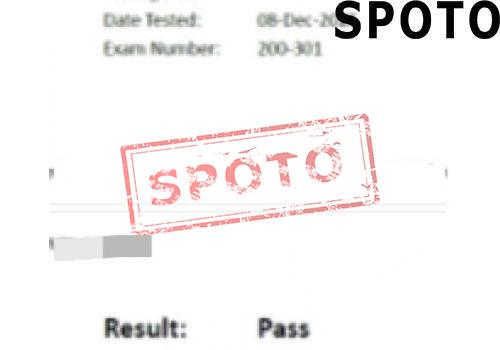
Table of Contents
Cisco: To clear the configuration, use: erase startup-config (which deletes the contents of NVRAM), then reboot the router with: reload.
Huawei: To clear the configuration, use: reset saved-configuration, then reboot the router with: reboot.
Cisco Router and Switch Password Recovery:
Selective Routing Advertisement:
For example, in RIP configuration, configure the S0 interface to only receive but not send RIP advertisements.
Router(config)#router rip Router(config-router)#passive-interface serial 0
About Keyboard Shortcuts:
- Ctrl+B (backward): Move the cursor one character to the left.
- Ctrl+F (forward): Move the cursor one character to the right.
- Ctrl+A (A stands for "beginning"): Move the cursor to the beginning of the command.
- Ctrl+E (end): Move the cursor to the end of the command.
- Esc+B (backward): Move the cursor one word to the left.
- Esc+F (forward): Move the cursor one word to the right.
- Ctrl+Z: Exit privileged mode at once (
Router#).
About Modes:
- User Mode (User Execution Mode): The initial mode when connecting to a router, characterized by the ">" prompt. In this mode, you can only view the configuration and status of the router but cannot make changes. To configure the router, you must enter Privileged Mode.
- Privileged Mode (Privilege Execution Mode): To enter this mode, use the command
enable. If a password is set, you will need to enter the correct password. This mode is characterized by the "#" prompt. - Global Configuration Mode: From Privileged Mode, you can enter this mode by using the command
configure terminal. In this mode, you can make global configurations. - Specific Configuration Modes: These include router interface configuration mode, router sub-interface configuration mode, routing protocol configuration mode, line configuration mode, and more.
Mode Transitions:
- After connecting to the router, you first enter User Mode, which is characterized by the ">" symbol. In this mode, you can only view the router's configuration and status, but you cannot configure it.
- To make configurations, you must enter Privileged Mode. Use the command
enableto enter, and if a password is set, it must be entered correctly. - In Privileged Mode, the prompt will change to "#".
- To enter Global Configuration Mode from Privileged Mode, use the command
configure terminal.
Commands to Enter Specific Configuration Modes from Global Configuration Mode:
- Privileged Mode → Router Interface Configuration Mode:
- For serial interface:
interface serial ?? - For Ethernet interface:
interface ethernet ??
- For serial interface:
- Privileged Mode → Router Sub-interface Configuration Mode:
subinterface - Privileged Mode → Routing Protocol Configuration Mode:
router rip - Privileged Mode → Line Configuration Mode:
line vty ??
Commands and Usage in Different Modes:
User Mode (Router>):
show ping,telnet,connect: These commands are used the same way as in Privileged Mode.
Privileged Mode (Router#):
show users: View all users connected to the router.show hosts: View the IP-to-name mapping table.show arp: View the ARP (Address Resolution Protocol) table.show protocol: View the router's protocol status.show version: View the version of the IOS and memory information.show flash: View the flash memory usage.show clock: View the current time of the router.show history: View the last ten commands entered.show ip interface brief: View the IP settings and status of router interfaces.show interfaces: View the status of all router interfaces.show interfaces [specific interface]: View the status of a specific router interface.show running-config: View the configuration file in RAM.show startup-config: View the configuration file in NVRAM.show cdp: View CDP information.show cdp entry ??: View information about a specific neighboring router.show cdp neighbors: View all neighboring routers.show cdp neighbors detail: View detailed information about all neighboring routers.show cdp traffic: View information about CDP packets.show cdp ?? (port number): View CDP information for a specific port.show session: View the status of the original router during a remote login session.clear cdp counters: Clear CDP counters.clear cdp table: Clear the CDP information.copy running-config startup-config: Copy the configuration file in RAM to NVRAM.copy startup-config running-config: Copy the configuration file in NVRAM to RAM.copy tftp running-config: Copy the configuration file from a TFTP server to RAM.copy running-config tftp: Copy the configuration file from RAM to a TFTP server.ping ?? (hostname or IP): Test the connectivity between the router and a remote router.telnet ?? (hostname or IP): Log in to a remote router (requires login password).connect ?? (hostname or IP): Similar totelnetfor remote login.traceroute ?? (hostname or IP): Trace the route to a destination router.
Commands in Global Configuration Mode:
hostname ?? (name): Change the router's hostname.enable password ??: Change the password for entering Privileged Mode.enable secret ??: Change the secret password for entering Privileged Mode (this password is encrypted).clock set hour:minute:second day month year: Set the router's time.ip host ?? (name) ?? (IP address): Add a hostname-to-IP address mapping.service password-encryption: Enable encryption for all passwords (theenable secretpassword is already encrypted).cdp run: Enable CDP (Cisco Discovery Protocol) on all interfaces.cdp timer: Set the CDP advertisement timer.cdp holdtime: Set the CDP hold time.end: Exit from Global Configuration Mode to User Mode.exit: Exit one level at a time (use multipleexitcommands to progressively step out).
Commands in Interface Configuration Mode:
ip address ?? (IP address): Set the IP address for the interface.no shutdown: Enable the interface (bring it up).shutdown: Disable the interface (bring it down).clock rate ??: Set the clock rate for the DCE (Data Circuit-Terminating Equipment) side (DTE does not need this).cdp enable: Enable CDP (Cisco Discovery Protocol) on the interface.
Commands in Line Configuration Mode:
line vty 0 4password ??login: Enable login for the virtual terminal lines using the configured password.
Most Common Cisco Command Categories:
1. Switch Configuration Commands:
Mode Transition Commands:
- User Mode → Privileged Mode: Use the command
enable. - Privileged Mode → Global Configuration Mode: Use the command
config t. - Global Configuration Mode → Interface Mode: Use the command
interface [interface type] [interface number]. - Global Configuration Mode → Line Configuration Mode: Use the command
line [interface type] [interface number].
Note:
- User Mode: Used to view initialization information.
- Privileged Mode: Used to view all information, debug, and save configuration information.
- Global Configuration Mode: Used to configure overall settings for the router or switch, affecting all interfaces.
- Interface Mode: Used to configure settings for a specific interface.
- Line Configuration Mode: Used to configure control settings for the router's interfaces.
Configuration Commands:
show running-config: Display all configurations.show version: Display version number and register values.shutdown: Disable the interface.no shutdown: Enable the interface.ip address [IP address]: Configure an IP address for the interface.secondary [IP address]: Configure a secondary IP address for the interface.show interface [interface type] [interface number]: View the interface status and configuration.show controllers [interface]: Check if the interface has a DCE cable connected.show history: View the history of commands entered.show terminal: View terminal settings, including terminal buffer size.hostname [hostname]: Configure the router or switch hostname.config memory: Modify the startup configuration saved in NVRAM.exec-timeout 0 0: Set the console session timeout to zero (no timeout).service password-encryption: Encrypt all passwords manually.enable password [password]: Configure a plaintext password for Privileged Mode.enable secret [password]: Configure a secret (encrypted) password for Privileged Mode.line vty 0 4/15: Enter the configuration mode for telnet lines.password [password]: Configure a password for telnet access.line aux 0: Enter the configuration mode for the AUX (Auxiliary) port.password [password]: Configure a password for the AUX port.line con 0: Enter the configuration mode for the console port.password [password]: Configure a password for the console port.bandwidth [number]: Configure the bandwidth for an interface.no ip address: Remove the configured IP address from the interface.show startup-config: View the configuration in NVRAM (startup configuration file).show running-config: View the current configuration in RAM.copy running-config startup-config: Save the current configuration to the startup configuration file, so that it is used next time the router starts up.write: Save the current configuration to NVRAM (startup configuration file).erase startup-config: Clear the configuration stored in NVRAM, essentially clearing the startup configuration file.show ip interface brief: View the essential information of all interfaces.banner motd # [message] #: Configure the router or switch message-of-the-day (MOTD) banner.description [message]: Add a description to an interface.vlan database: Enter VLAN database mode.vlan [vlan number] [name]: Create a VLAN and assign a name to it.switchport access vlan [vlan number]: Assign a VLAN to an interface (access mode).interface vlan [vlan number]: Enter VLAN interface configuration mode.ip address [IP address]: Configure an IP address for a VLAN interface.vtp [service/client/transparent]: Configure the VTP (VLAN Trunking Protocol) mode for the switch.vtp domain [domain name]: Configure the VTP domain for the switch.vtp password [password]: Configure the VTP password for the switch.switchport mode trunk: Enable trunking mode on the interface.no vlan [vlan number]: Delete a VLAN.show spanning-tree vlan [vlan number]: View the spanning tree status for a specific VLAN.
Router Configuration Commands:
ip route [non-direct network] [subnet mask] [next-hop address]: Configure static/default route.show ip route: View the routing table.show protocols: Display all passive routing protocols and which protocols are configured on each interface.show ip protocols: Display routing protocols configured on the router and provide information about timers used in the routing protocols.router rip: Activate the RIP (Routing Information Protocol).network [directly connected network]: Advertise a directly connected network in RIP.interface loopback 0: Activate the loopback interface.passive-interface [interface type] [interface number]: Configure an interface to be passive (used for protocols like RIP).debug ip [protocol]: Dynamically view routing update information for a specific protocol.undebug all: Disable all debugging output.router eigrp [AS number]: Activate the EIGRP (Enhanced Interior Gateway Routing Protocol).network [network] [subnet mask]: Advertise a directly connected network in EIGRP.show ip eigrp neighbors: View the EIGRP neighbor table.show ip eigrp topology: View the EIGRP topology table.show ip eigrp traffic: View the number of packets sent by EIGRP.router ospf [process ID]: Activate the OSPF (Open Shortest Path First) protocol.network [directly connected network] area [area number]: Advertise a directly connected network in OSPF.show ip ospf: Display OSPF process ID and Router ID.encapsulation [encapsulation format]: Change the encapsulation format of the interface.no ip domain-lookup: Disable domain name lookup on the router.ip routing: Enable routing functionality on a Layer 3 switch.show users: View online users on the switch.clear line [line number]: Clear a specific line on the switch.
Layer 3 Switch Configuration Commands:
- Configure a group of Layer 2 ports:
configure terminal: Enter configuration mode.interface range {port-range}: Enter range configuration mode to configure multiple ports.
- Configure Layer 3 ports:
configure terminal: Enter configuration mode.interface {fastethernet | gigabitethernet} interface-id | vlan vlan-id | port-channel port-channel-number: Enter port configuration mode for specific interfaces or VLANs.no switchport: Convert the physical port to a Layer 3 port.ip address [ip_address] [subnet_mask]: Configure IP address and subnet mask for the Layer 3 port.no shutdown: Activate the port.
Example:
Switch(config)# interface gigabitethernet0/2 Switch(config-if)# no switchport Switch(config-if)# ip address 192.20.135.21 255.255.255.0 Switch(config-if)# no shutdown - Configure VLAN:
configure terminal: Enter configuration mode.vlan [vlan-id]: Enter VLAN configuration mode, and specify a VLAN ID (new or existing).name [vlan-name]: Optionally assign a name to the VLAN (default name isVLANfollowed by the VLAN number).mtu [mtu-size]: Optionally change the MTU (Maximum Transmission Unit) size.
Example:
Switch# configure terminal Switch(config)# vlan 20 Switch(config-vlan)# name test20 Switch(config-vlan)# endAlternatively:
Switch# vlan database Switch(vlan)# vlan 20 name test20 Switch(vlan)# exit - Assign ports to a VLAN:
configure terminal: Enter configuration mode.interface [interface-id]: Enter the interface to which you want to assign the VLAN.switchport mode access: Define the port as a Layer 2 access port.switchport access vlan [vlan-id]: Assign the interface to a VLAN.
Example:
Switch# configure terminal Switch(config)# interface fastethernet0/1 Switch(config-if)# switchport mode access Switch(config-if)# switchport access vlan 2 Switch(config-if)# end
VLAN Trunk Configuration Commands
- Enter Configuration Mode:
configure terminal: Enter global configuration mode.
- Configure Trunk Port:
interface interface-id: Enter the port configuration mode (e.g.,FastEthernet0/4).switchport trunk encapsulation {isl | dot1q | negotiate}: Configure Trunk encapsulation type (ISL, 802.1Q, or negotiate).switchport mode {dynamic {auto | desirable} | trunk}: Configure port trunk mode.switchport access vlan vlan-id: Optionally, specify the default VLAN if the port is not in trunk mode.switchport trunk native vlan vlan-id: Configure the Native VLAN for 802.1Q.
Example:
Switch(config)# interface fastethernet0/4 Switch(config-if)# switchport mode trunk Switch(config-if)# switchport trunk encapsulation dot1q Switch(config-if)# end - Define Allowed VLANs on Trunk:
switchport trunk allowed vlan {add | all | except | remove} vlan-list: Configure the allowed VLANs on the trunk port.no switchport trunk allowed vlan: Remove VLAN restrictions and allow all VLANs.
Example:
Switch(config)# interface fastethernet0/1 Switch(config-if)# switchport trunk allowed vlan remove 2 Switch(config-if)# end - Configure Native VLAN for 802.1Q:
switchport trunk native vlan vlan-id: Configure the Native VLAN for 802.1Q trunks.no switchport trunk native vlan: Restore to the default Native VLAN.
Example:
Switch(config)# interface fastethernet0/2 Switch(config-if)# switchport trunk native vlan 10 Switch(config-if)# end - Configure Load Balancing based on Port Priorities:
spanning-tree vlan vlan-id port-priority priority: Configure port priority for specific VLANs.
Example:
Switch(config)# interface fastethernet0/1 Switch(config-if)# spanning-tree vlan 8 port-priority 10 Switch(config-if)# spanning-tree vlan 9 port-priority 10 Switch(config-if)# end - Verify and Save Configuration:
show vlan: Verify VLAN configuration.show running-config: View current configuration.copy running-config startup-config: Save configuration.
Load Balancing by Configuring STP Path Cost
Trunk1 carries VLANs 8-10, Trunk2 carries VLANs 2-4
- Enter Switch 1 configuration mode:
configure terminal - Enter interface FastEthernet 0/1:
interface fastethernet 0/1 - Configure trunk encapsulation:
switchport trunk encapsulation {isl | dot1q | negotiate} - Set the port mode to trunk (default is ISL encapsulation):
switchport mode trunk - Exit the interface configuration mode:
exit - Repeat steps 2-4 for interface FastEthernet 0/2:
interface fastethernet 0/2switchport trunk encapsulation {isl | dot1q | negotiate}switchport mode trunkexit - Verify the running configuration:
show running-config - Verify the VLANs learned by Switch 1:
show vlan - Enter configuration mode again:
configure terminal - Enter interface FastEthernet 0/1 again:
interface fastethernet 0/1 - Set the spanning-tree path cost for VLAN 2:
spanning-tree vlan 2 cost 30 - Set the spanning-tree path cost for VLAN 3:
spanning-tree vlan 3 cost 30 - Set the spanning-tree path cost for VLAN 4:
spanning-tree vlan 4 cost 30 - Exit configuration mode:
end - Repeat steps 9-14 for interface FastEthernet 0/2 to configure spanning-tree path cost for VLANs 8, 9, and 10.
- Save the configuration:
copy running-config startup-config
Cisco Command Set – Routing Protocols and Troubleshooting
ip route Command
The ip route command is used to configure static routes:
Router(config)# ip route <network address or subnet> [subnet mask] <next hop IP address | exit address from local router> [administrative distance 0-255, default is 1]Note: Static address configuration
ip default-network Command
The ip default-network command is used to define a default network, typically with a dynamic routing protocol:
Router(config)# ip default-network <destination network>Note: Used with routing protocols to configure a default route based on one of the dynamic route numbers.
Router(config)# ip route 0.0.0.0 0.0.0.0 <next hop IP address | exit address from local router>Note: Only used on the exit router when there is a single public IP address.
Interior Routing Protocols
Use the router and network commands to enable routing protocols:
Router(config)# router <routing protocol: rip | igrp | eigrp | ospf | is-is etc.> [AS number]Router(config-router)# network <directly connected network that will use the routing protocol>Router(config-router)# network <another directly connected network that will use the routing protocol>Routing Information Protocol (RIP)
Router(config)# router ripRouter(config-router)# network <directly connected network with RIP>Router# show ip protocolsRouter# show ip routeRouter# debug ip ripInterior Gateway Routing Protocol (IGRP)
Router(config)# router igrp <AS number>Router(config-router)# network <directly connected network with IGRP>Router# show ip interfaceRouter# show ip protocolsRouter# show ip routeRouter# debug ip ripip route Command
The ip route command is used to configure static routes:
Router(config)# ip route <network address or subnet> [subnet mask] <next hop IP address | exit address from local router> [administrative distance 0-255, default is 1]Note: Static address configuration
ip default-network Command
The ip default-network command is used to define a default network, typically with a dynamic routing protocol:
Router(config)# ip default-network <destination network>Note: Used with routing protocols to configure a default route based on one of the dynamic route numbers.
Router(config)# ip route 0.0.0.0 0.0.0.0 <next hop IP address | exit address from local router>Note: Only used on the exit router when there is a single public IP address.
Interior Routing Protocols
Use the router and network commands to enable routing protocols:
Router(config)# router <routing protocol: rip | igrp | eigrp | ospf | is-is etc.> [AS number]Router(config-router)# network <directly connected network that will use the routing protocol>Router(config-router)# network <another directly connected network that will use the routing protocol>Routing Information Protocol (RIP)
Router(config)# router ripRouter(config-router)# network <directly connected network with RIP>Router# show ip protocolsRouter# show ip routeRouter# debug ip ripInterior Gateway Routing Protocol (IGRP)
Router(config)# router igrp <AS number>Router(config-router)# network <directly connected network with IGRP>Router# show ip interfaceRouter# show ip protocolsRouter# show ip routeRouter# debug ip rip









